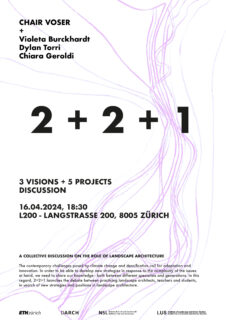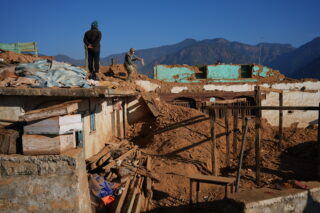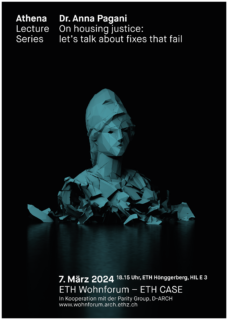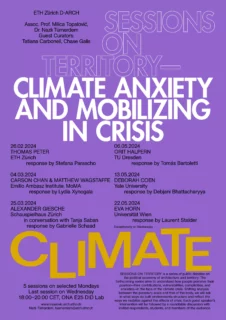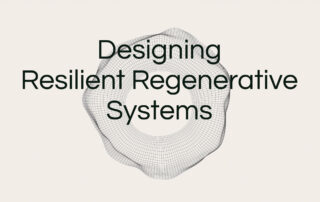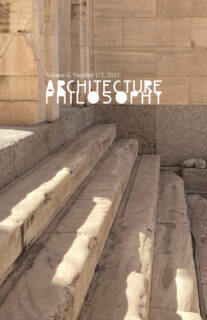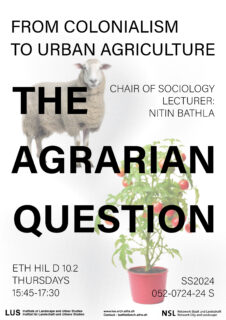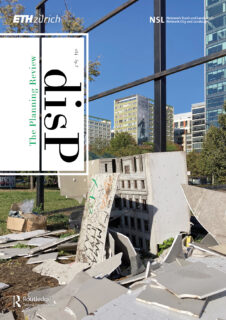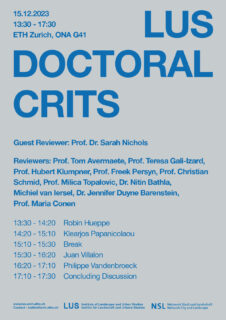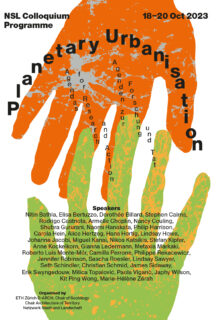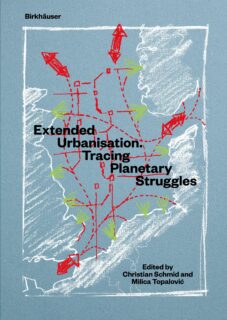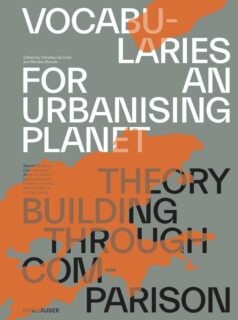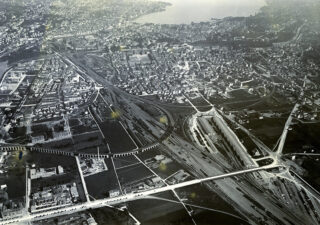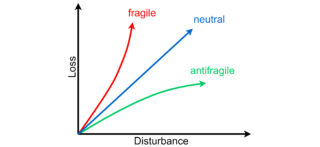Drive Forward: Revolutionizing Traffic with Advanced Vehicle Trajectory Reconstruction
Understanding how vehicles move is crucial for safer, more coordinated, and smarter transportation systems. However, directly observing vehicle trajectories is impractical, posing a challenge to obtaining accurate trajectory data with limited sensing capabilities. We explore our innovative approach to vehicle trajectory reconstruction, reshaping the future of traffic management.
«Das Bild der Heidi-Schweiz wird sich verändern und es wird neue Naturen geben»
Der Klimawandel bedeutet mehr Bergstütze und Überschwemmungen. Wie die Landschaftsarchitektur darauf reagieren kann, untersucht die ETH-Professorin Martina Voser im Sandkasten, am Computer und im Dialog mit der Bevölkerung.
«Der Begriff der alpinen Brache war eine Provokation»
Der Soziologieprofessor Christian Schmid wird dieses Jahr emeritiert. Im Interview mit Andres Herzog blickt er zurück auf seine Zeit am ETH Studio Basel, das mit dem Buch «Die Schweiz: ein städtebauliches Porträt» für Diskussionen gesorgt hat und dessen Publikationen ab Mai als Open Access online frei zugänglich sind.
Ramification. Eine Ausstellung zur zeitgenössischen Landschaftsarchitektur
Vernissage: 20. April 2024 ab 17 Uhr. Ausstellung: 21. April bis 07. Juli 2024.
What can cities do to promote acceptance of densification?
Swiss cities are more likely to accept densification when densification projects provide affordable housing and green spaces compared to densification that is implemented through reduced regulations for housing construction. By prioritizing a socio-ecological densification, extensive planning procedures and delays might be minimized. Read the article on ETH News.
DELUS Issue 0
Il numero pilota di DELUS è stato presentato presso ONA DiD Lab nell’autunno del 2023. Offre una varietà di spunti diversi relativi a questioni urbane e legate al paesaggio. Presenta metodi nuovi per decifrare svariati mondi e narrare storie variegate. I contributi spaziano dallo svisceramento di storie di Continua
disP 59/4, December 2023
disP – The Planning Review, Volume 59, Issue 4, December 2023 is now available online on Taylor & Francis Online.
Globale Modellierung des ländlichen Strassenverkehrs ausserhalb der Städte
Der Verkehr auf ländlichen Strassen ausserhalb der Städte kann erhebliche negative Auswirkungen auf die Ökologie und Umwelt von Natur- und Agrarlandschaften haben. Der Umfang dieser Auswirkungen kann jedoch nicht bestimmt werden, da in vielen Ländern keine Daten zum Verkehrsvolumen auf ländlichen Strassen verfügbar sind. Deshalb haben wir einen Continua
Master of Science in Landscape Architecture
Applications until 30 April for autumn 2024. The Master‘s degree programme in Landscape Architecture is aimed at students with a Bachelor‘s degree in architecture or landscape architecture from a university or Swiss University of Applied Sciences with at least 180 ECTS or equivalent.
NSL Veranstaltungsplakat Frühjahrssemester 2024
Das neue NSL Veranstaltungsplakat Frühjahrssemester 2024 ist da!
Maintenance and Advanced Analytics in Railways
On-Board Monitoring techniques, defined as using commercial trains to monitor the track status, have garnered much attention recently. While data come in relatively low quality, OBM is a low-cost and efficient alternative to traditional monitoring methods. Thus, funded by the ETH Mobility Initiative project OMISM, this study checks Continua
Damian Jerjen named «Professor of Practice»
Damian Jerjen is currently Director of the Swiss association for spatial planning EspaceSuisse and Lecturer at ETH Zurich and other Swiss universities. He is an economist and spatial planner. He serves on various bodies, including the Council for Spatial Planning (ROR). At EspaceSuisse, he supports and brings together Continua
How Will the Railway Look Like in 2050?
Many aspects contribute to the further development of the technologies, but no single game changer could be identified. Developments are expected in automation; revolutionary changes are perceived as unlikely.
Envisioning a Cycling-centric Future: Urban Traffic Modeling and Management for a Bi-modal Network
Allocating dedicated road space to slow modes is considered an effective way toward a radical modal shift. By exploiting traffic flow theoretical knowledge, convenient models can be developed to help evaluate the influence of such a large-scale transformation on network traffic performance. Novel strategies for bi-modal urban traffic Continua
Stress Testing Transport Systems
Transportation systems are vital for economic and social development, yet are susceptible to disruptions caused by natural hazards, especially considering the adverse impacts of climate change on increasing the intensity of frequency of climatic hazards. To manage these risks effectively, stress testing, as a diagnostic tool, has shown Continua
Colloquium on Sociology and Urban Studies
28. Februar 2024, 8:00-10:00 | Kolloquium | ETH Zürich, Campus Hönggerberg, HIT E 51 (Werner Siemens Auditorium).
CAS ETH in Zukunft der Raumentwicklung
Bewerbung bis 15. Juli 2024 | Start: Herbst, Dauer: 6 Monate. Das CAS «Zukunft der Raumentwicklung» vermittelt zeitgemässe Themen und Werkzeuge für den Umgang mit Unsicherheiten und Komplexität.
10-Minuten-Nachbarschaften – Eine Tour rund um den Idaplatz
24. September 2024, 18:15–19:15 | Öffentliche Führung | Zürich, Kreis 3.
MEHR WOHNRAUM IN STÄDTEN – Wie gelingt die innere Verdichtung?
24. Mai 2024, 09:00–17:00 (Anmeldeschluss 13. Mai) | ETH Forum Wohnungsbau | ETH Zürich, Zentrum, Auditorium Maximum (HG F 30).
ETH STUDIO BASEL Open Access: Public Launch
7 May 2024, 16:00–19:00 | with Apéro | ETH Zürich, main building, HG F30 Audimax.
Abschlussvorlesung / Final Lecture Prof. Dr. Christian Schmid: No Condition is Permanent
2 May 2024, 18:15–19:30 | ETH Zürich, Hönggerberg, HIL E3.
Neue Ansätze in der Modellierung: «The German experiment with low flat rates for public transport. An economic and political evaluation»
New date will be announced asap | Seminar | ETH Zürich, Zentrum, ML F38.
10-Minuten-Nachbarschaften
30. April – 16. Mai 2024 | Plakatausstellung | ETH Zürich, Hönggerberg, HIL D Foyer. 17. Mai – 30. Mai 2024 | ETH Zürich, Zentrum, HG E 4.
2 + 2 + 1 A Collective Discussion on the Role of Landscape Architecture
16 April 2024, 18:30 | Zürich, Langstr. 200, L 200.
Nachfragegetriebene ÖV-Systeme: «Lessons from the design of integrated on-demand transit systems in two cities»
20 March 2024, 14:00–15:15 | Seminar | ETH Zürich, Hönggerberg, HIL F36.1.
Neue Ansätze in der Modellierung: «Best of both worlds: data driven models with behavioural realism and flexibility»
DATE WILL CHANGE! (previously: 20 March 2024, 10:30 – 12:00) | Seminar | ETH Zürich, Hönggerberg, HIL F36.
Meaningful Careers: Built Environment Professionals in Humanitarian Aid
14 March 2024, 16:00–18:00 | Information exchange with reconstruction experts | ETH Zürich, Hönggerberg, HIB 52, Open Space.
100 Ideas for the Western Balkans: Designing Urban Imaginaries
11 March – 8 April 2024 | Exhibition | Tirana, Albania, Pyramid of Tirana.
Anna Pagani «On housing justice: let’s talk about fixes that fail»
7 March 2024, 18:15 | ETH Zürich, Hönggerberg, HIL E 3.
Die 10-Millionen-Schweiz: Platz für alle?
3. März 2024, 13:00–13:45 | Treffpunkt Science City | ETH Zürich, Hönggerberg HCI, Raum G3.
Sessions on Territory – Climate Anxiety and Mobilizing in Crisis: CLIMATE
26.2. / 04.3. / 25.3. / 06.5. / 15.5. / 22.5. 2024 | 18:00–20:00 | Public debates | ETH Zürich, Oerlikon, Neunbrunnenstr. 50, ONA E25 DID Lab.
In Gedenken an Willy A. Schmid
Willy A. Schmid war von 1978 bis 2008 Professor für Landschafts- und Umweltplanung am Institut für Raum- und Landschaftsentwicklung (IRL), der heutigen Professur für Planung von Landschaft und Urbanen Systemen (PLUS) und Mitbegründer des Netzwerk Stadt und Landschaft (NSL) an der ETH Zürich. Er hat Generationen von Raum- und Landschaftsplaner:innen Continua
MAS ETH in Regenerative Systems
CAS#2 Beyond Systems Thinking. Applications: 11 March to 7 April 2024, Duration: May-September 2024. The new MAS in Regenerative Systems (DRRS) is a systemic programme for designerly enacting complex systems in a highly innovative didactic setting.
Spielraum & Öffentlicher Raum (lecture) | Public Space: The Real and the Ideal (journal presentation)
21 February 2024, 17:30–19:00 | ETH Zürich, Hönggerberg, HIL E 4.
The Agrarian Question: From Colonialism to Urban Agriculture
on Thursdays, spring semester 2024, 15:45-17:30 | ETH Zürich, Hönggerberg, HIL D 10.2
disP 59/3, September 2023
disP – The Planning Review, Volume 59, Issue 3, September 2023 is now available online on Taylor & Francis Online.
CSFM Seminar: New Regulations on Autonomous Vehicles for Switzerland
11 January 2024, 15:00 | ETH Zürich.
Prof. Dr. Eva Heinen zur ordentlichen Professorin für Verkehrs- und Mobilitätsplanung ernannt
Eva Heinens interdisziplinäre Forschung konzentriert sich auf Mobilität und Verkehr an der Schnittstelle von nachhaltiger Entwicklung, Verkehrs- und Raumplanung und Gesundheit. Ihre Forschungsarbeiten zum nichtmotorisierten Verkehr waren wegweisend für die Gründung einer Interessengruppe innerhalb der World Conference on Transport Research Society (WCTRS). Eva Heinen verfügt zudem über umfangreiche Continua
Martina Voser zur ordentlichen Professorin für Landschaftsarchitektur ernannt
Martina Voser (mavo Landschaften gmbh) gilt als eine der anerkanntesten Akteurinnen in der Schweizer Landschaftsarchitekturszene und wurde für ihre Arbeiten mehrfach ausgezeichnet. Ihre Projekte sind nicht nur konzeptionell fundiert und visuell beeindruckend, sondern auch sozial und ökologisch motiviert. Nebst ihren herausragenden Verdiensten in der Praxis prägt sie seit Continua
LUS Doctoral Crits
15 December 2023, 13:30 – 17:30 | ETH Zürich, Oerlikon, ONA G41, Neunbrunnenstr. 50.
NSL Colloquium Planetary Urbanisation: Video now Online!
You missed the keynote speech of Roberto Luís Monte-Mór about extended urbanisation in the Brazilian Amazonia? Or you would like to pick and see one of the panels only? The choice is: New Urban Vocabularies, Concepts of Extended Urbanisation, Agrarian Urbanisms, Urban Design and Territories of Extended Urbanisation, Continua
Extended Urbanisation. Tracing Planetary Struggles NOW OPEN ACCESS DOWNLOAD!
One year after the first publication by Birkhäuser, the book is now available for download in the open access version.
Vocabularies for an Urbanising Planet: Theory Building through Comparison NOW OPEN ACCESS DOWNLOAD
One year after the first publication by Birkhäuser, the book is now available for download in the open access version.
City of Codes
The city of Zurich is a testament to the incredible power of urban codes and their influence on urban form. From the mid-nineteenth onwards, these codes, such as building laws, norms, standards, or even municipal constitutions, shaped and reshaped the city into what it is today. The research Continua
Verfechter des öffentlichen Raums
Günther Vogt ist einer der gefragtesten Landschaftsarchitekten unserer Zeit. Er hat eine ganze Generation von Architektinnen und Architekten für den öffentlichen Raum sensibilisiert. Nach 18 Jahren als ETH-Professor wurde er nun emeritiert.
Antifragile Urban Mobility: Traffic Control Beyond Resilience
Explore the future of urban mobility with ETH Zürich’s Antigones project. Pioneering antifragility in traffic control, it transcends resilience, adapting to disruptions for efficient and disruption-resistant road networks. Antifragile frameworks can recognize early disruptions and mitigate the negative impact on users and society.
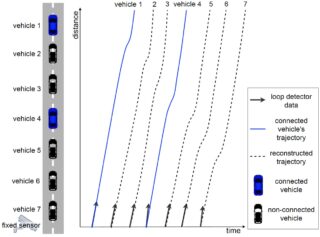


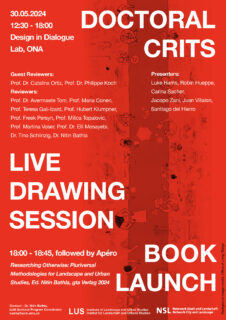
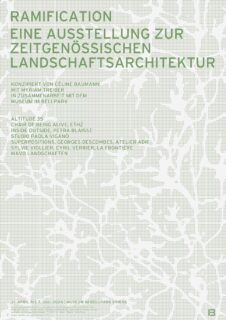
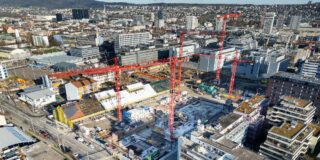


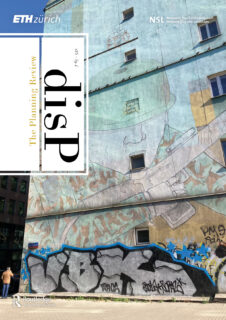
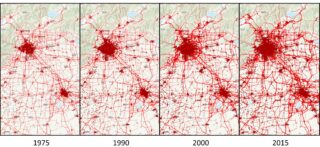
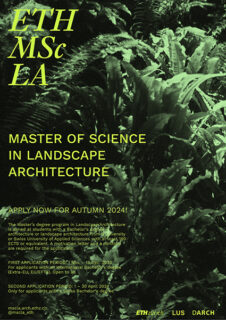
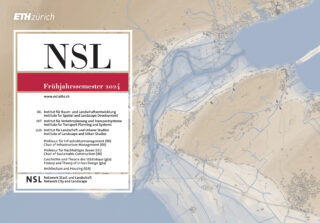



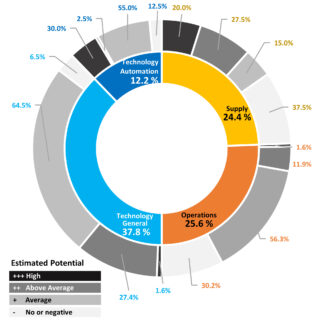
![Dynamic allocation of urban road space based on the bi-modal (motorized vehicles and bicycles) daily traffic pattern [source- mattership.io]](https://www.nsl.ethz.ch/wp-content/uploads/2024/03/Dynamic-allocation-of-urban-road-space-based-on-the-bi-modal-motorized-vehicles-and-bicycles-daily-traffic-pattern-source-mattership.io_-320x200.jpg)
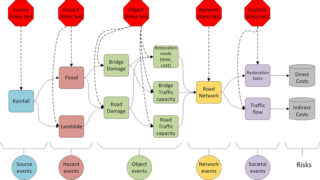
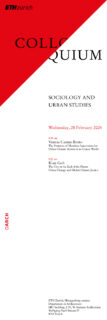
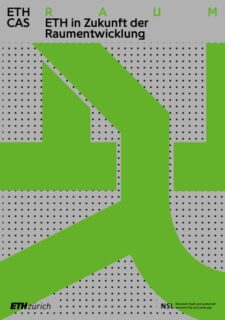
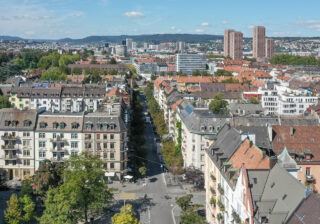
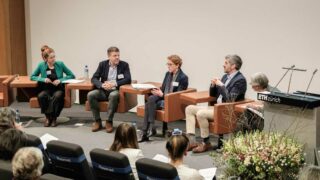
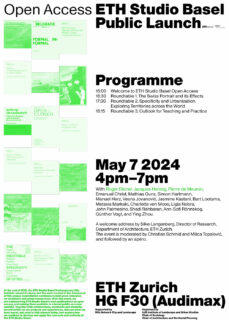
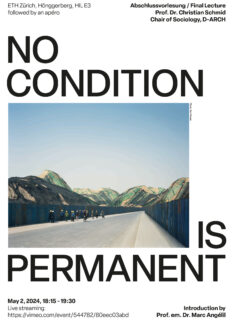
-320x180.jpg)
